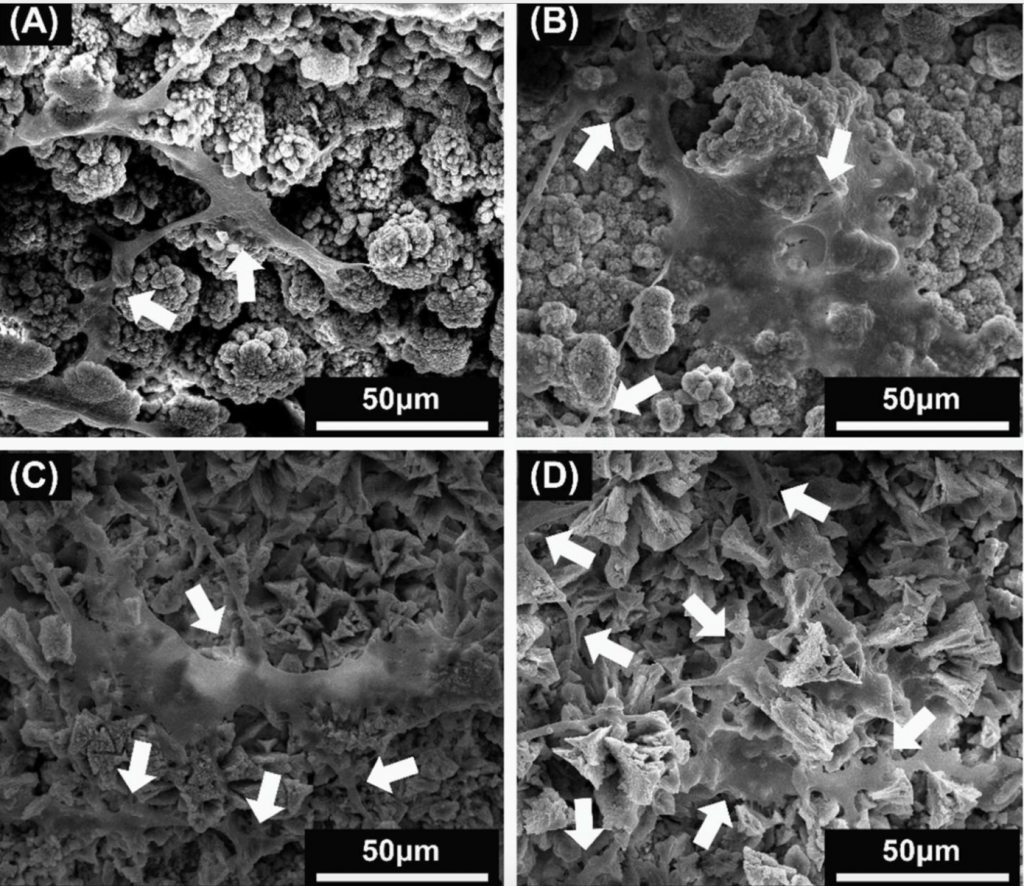Bioglass is a material made of calcium and phosphate salt. It is used in medicine and dentistry to bond defects found in bones and tooth enamel. Though bioglass bonding is highly effective, its fusion in larger bone defects has room for improvement. A team of researchers from Shanghai Jiaotong University and the University of Shanghai for Science and Technology in China have proposed a possible solution, by combining mesoporous bioactive glass (MBG) with C3S, one of the main materials found in common Portland cement, and 3D printing a result. Their findings were recently published under the title Three-dimensional printing of tricalcium silicate/mesoporous bioactive glass cement scaffolds for bone regeneration in the Journal of Materials Chemistry B from the Royal Society of Chemistry.

Succeeding where conventional methods fail
To make a material effective for bone repair, it must be strong, bioactive, degradable and have a complex porous architecture. While traditional methods of making MBG match these requirements, it is hard to match the desired specifications of natural bone for all four, for example, conventional foam templating produces a high porosity of 90%, but it has low mechanical strength. Using 3D printing to create a structure means that the researchers were capable of designing a complex porous structure with the aid of computer modeling, and adding the C3S component of cement to the mix means that the end result is strong and has high a rate of possible attachment to the bone.
The process
Though biocompatible and degradable, C3S struggles as a material for bone scaffolds as it doesn’t match the growth rate of bones. As to be expected, 3D printing with cement (C3S) is also difficult as it sets quickly, so a curing process was developed. The researches added a binder to avoid setting of the C3S, MBG and water composite, they 3D printed it using a 3D Bioplotter from EnvisionTEC, then afterwards cured it in a water bath of 100% humidity to solidify it.
Gif above shows the 3D Bioplotter printing components for a prosthetic hand in a video from EnvisionTEC on YouTube.
What was the result?
In comparing pure C3S scaffolds to those made of a C35/MBG compound, the research found that composite C3S/MBG material was better at growing bones than just CS3 alone. Adding human bone marrow stem cells to the scaffolds stimulated the number and variety of cells formed, along with a capacity for bone attachment, as can be seen in the images below.

Tests performed outside natural conditions, and on a model of a defective rat skull prove promising, though C3S/MBG has not yet been tested in living conditions.
The research by this group in Shanghai is promising, and not dissimilar to the recent project by Northwestern University that managed to 3D print hyperelastic bone structures. We’re intrigued to see how far the team manage to go with inventive cement and bioglass composite.
Featured image shows an x-ray of an arm fracture Image via: Advanced Orthosports



